How to Grow Bananas in the UK: A Complete Guide
Bring a touch of the tropics to your UK garden by growing bananas. This guide covers selecting hardy varieties, planting, care, and overwintering tips for thriving plants despite the British climate.
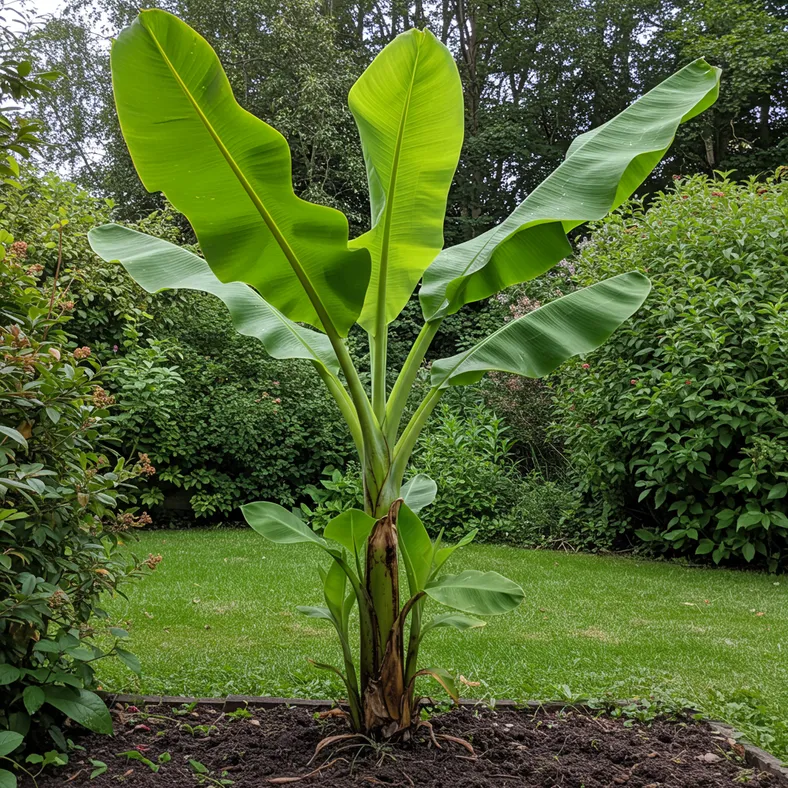
Growing bananas in the UK might seem ambitious, but with the right varieties and care, you can enjoy their exotic foliage in your garden. While fruiting is rare outdoors due to our cooler climate, hardy types like Musa basjoo can thrive with protection. This guide provides practical steps for UK gardeners, from beginners to intermediates, to cultivate these striking plants successfully. Remember, temperatures are in Celsius, and timings align with UK seasons.
Disclaimer: This article contains Amazon affiliate links. We may earn a small commission from qualifying purchases at no additional cost to you.
Choosing the Right Banana Plants
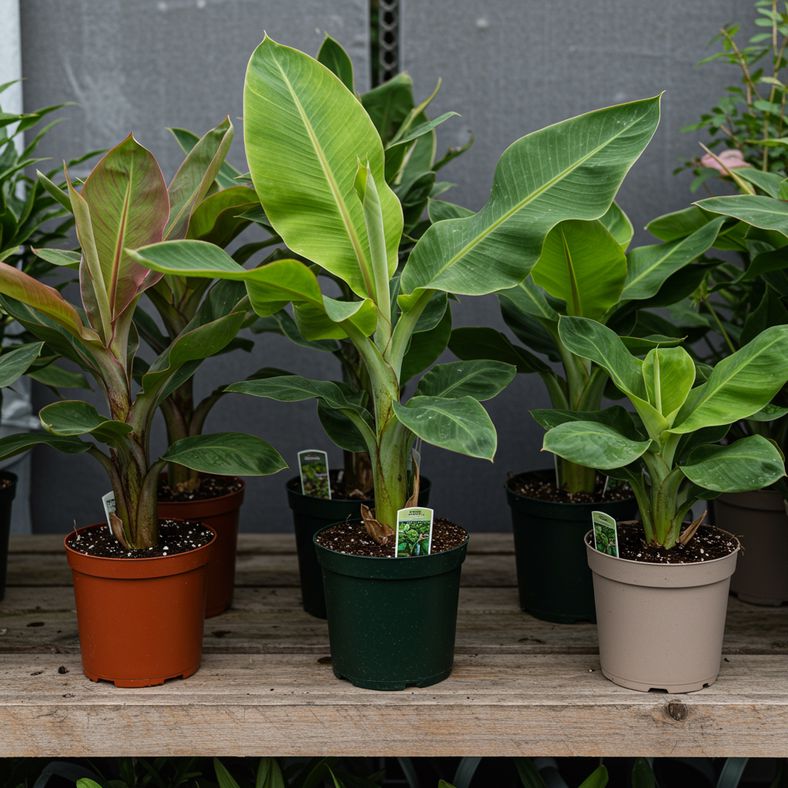
Banana plants add tropical drama to UK gardens with their large, paddle-shaped leaves. Most are tender and need indoor protection over winter, but hardier varieties can survive outdoors in milder areas if protected. Opt for Musa or Ensete species suited to our climate.
- Musa basjoo (Japanese banana): The hardiest option, surviving winters in mild UK spots like southern England or urban heat islands.
- Ensete ventricosum 'Maurelii' (Red Abyssinian banana): Tender with striking red-tinted leaves, ideal for containers.
Buy from garden centres or online in spring/summer. Look for healthy plants with vibrant leaves and no pests. These plants suit tropical borders, patios, or as focal points, growing up to 3m tall.
Planting Banana Plants
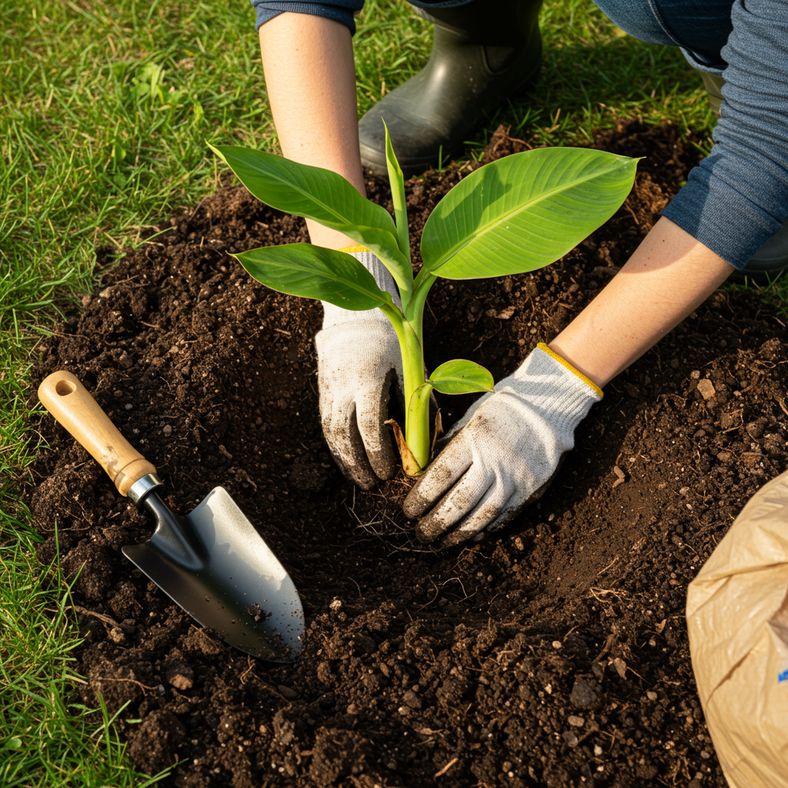
Plant outdoors from late May to early June, after the last frost. Choose a warm, sunny, sheltered spot to avoid wind damage. For borders, enrich soil with compost. In containers, use loam-based compost like John Innes No. 3 mixed with grit for drainage.
Acclimatise plants gradually over a week before planting. Dig a hole twice the rootball size, position the plant, and water well. Space allows for growth—leaves can span several metres.
Caring for Banana Plants
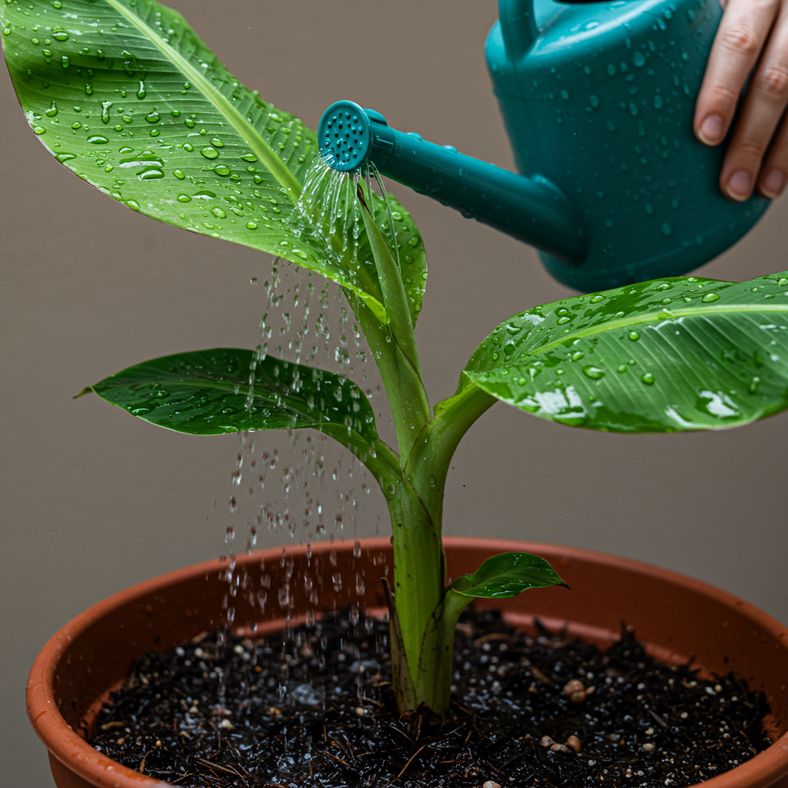
Bananas grow rapidly from spring to autumn. Water generously in summer, keeping soil moist but not waterlogged. Feed with a general-purpose liquid fertiliser weekly; for fruiting potential in greenhouses, use a high-potassium option like tomato feed. We recommend Levington Tomorite (Amazon link) for boosting growth.
Mulch borders in spring to retain moisture. Re-pot container plants every 1-2 years into larger pots.
Overwintering Banana Plants
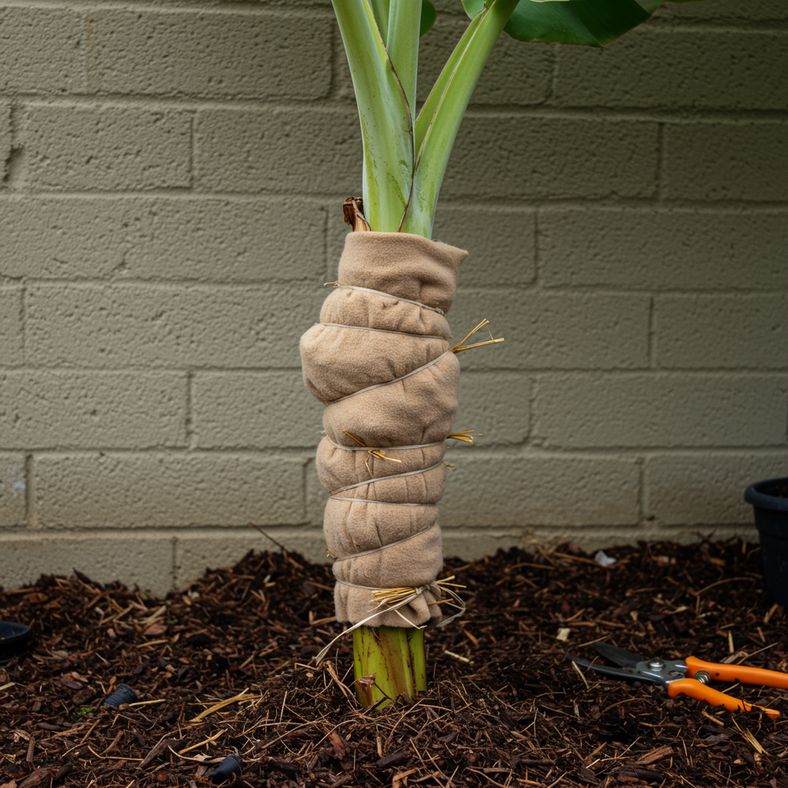
Most bananas are tender; bring indoors from October. Store in a bright room at 10-15°C, watering sparingly. For hardy Musa basjoo outdoors, cut back leaves in autumn and wrap the stem with fleece and straw. Mulch roots thickly. Container plants: insulate pots with bubble wrap.
In mild areas, established plants may regrow from the base even if top growth dies.
Pruning and Training Banana Plants
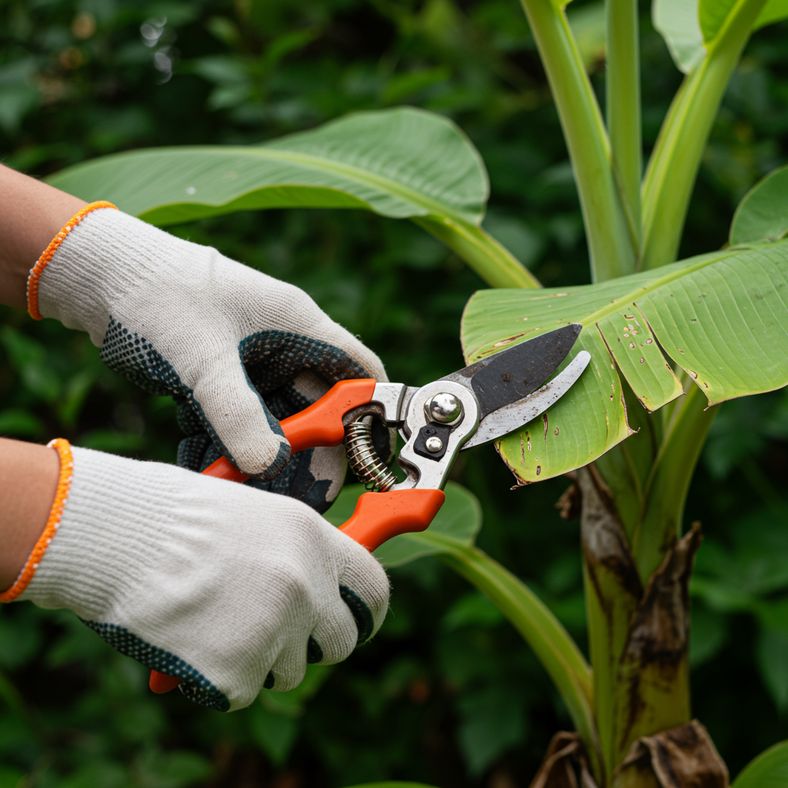
Minimal pruning needed; remove dead leaves with sharp secateurs. For tall plants, cut back stems to 60cm in growing season—new growth will emerge. We suggest JiveSnip Premium Titanium Garden Secateurs (Amazon link) for clean cuts.
Avoid wind-exposed spots to prevent shredded leaves.
Propagating Banana Plants
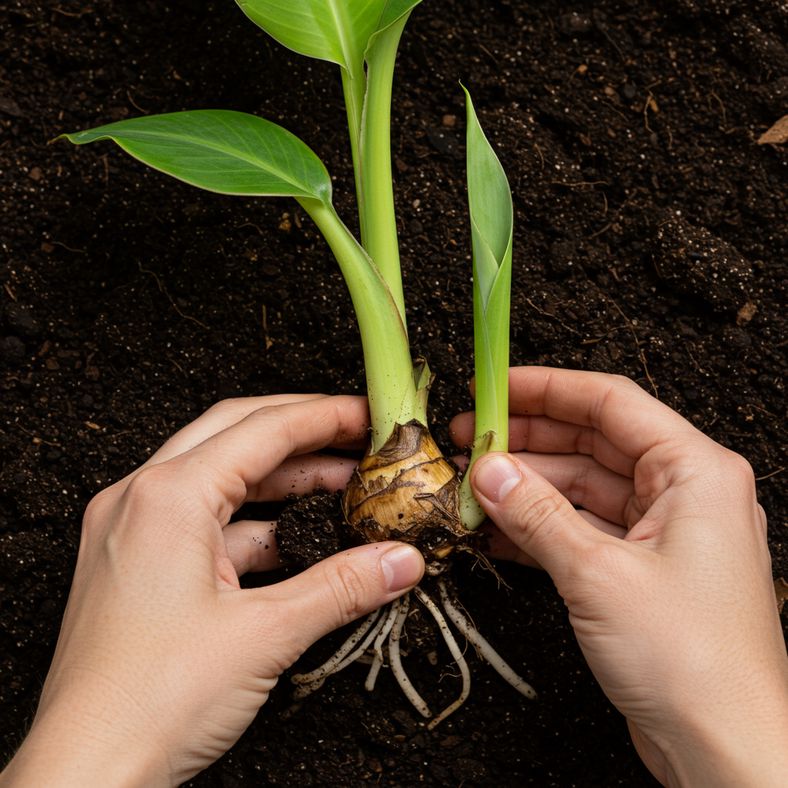
Propagate Musa from offsets in spring: dig up suckers with roots and pot individually. Ensete from seeds: soak and sow at 21-24°C.
Germination takes weeks to months; grow in warmth.
Common Problems with Banana Plants

Watch for cold damage, causing die-back—protect from frost. Under/over-watering leads to limp or brown-edged leaves. Pests like mealybugs or red spider mites may appear indoors; treat promptly.
Shredded leaves from wind are common but harmless.